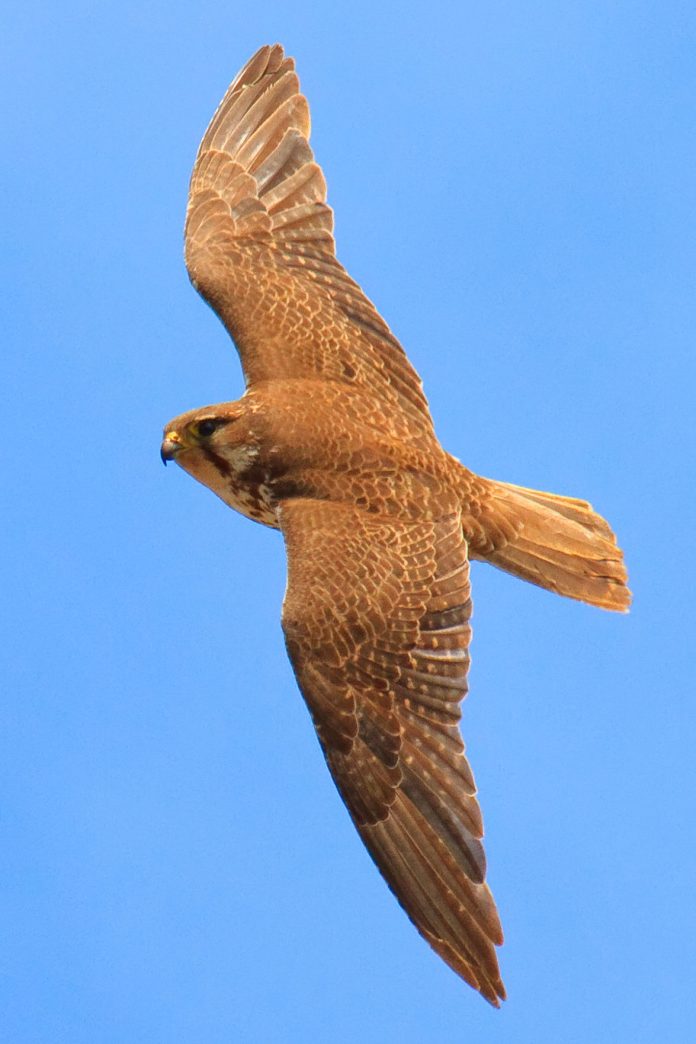Love is in the air at Pinnacles National Park and around San Benito County as a variety of raptors, birds of prey, begin their nesting season. Raptors are a common and beautiful sight at Pinnacles during the nesting season, which typically runs from January to August. As specialized hunters, raptors have powerful beaks and talons for tearing apart prey, and exceptional eyesight for locating food from great distances. Most raptors can see even small prey animals clearly from almost 2 miles away, thanks to their telescopic vision.
Over 20 species of raptors have been seen at the Pinnacles, with 10 species nesting on a yearly basis, including the highest density of nesting prairie falcons in National Park units in the country. Diurnal raptors—birds of prey active during the day—include falcons, hawks, and eagles. The geography of the park provides raptors with ideal nesting sites. Inaccessible cliffs and rock formations are used by prairie falcons, peregrine falcons, golden eagles, red-tailed hawks, and American kestrels. The oaks and pines along valleys and canyon are used for nesting by Cooper’s hawks, sharp-shinned hawks, and red-shouldered hawks.
Diurnal raptors make up only a part of the assemblage of birds of prey found at Pinnacles. As twilight fades into night, owls – the nocturnal raptors of the park – become active. Owls have well-developed night vision and hearing, as well as feathers specially adapted for silent flight, to aid them in hunting for rodents and other birds at night. At Pinnacles, owls are most often heard rather than seen. Great-horned owls hoot loudly in the spring near the reservoir and Balconies, and western screech-owls vocalize from near the Bear Gulch Nature Center with a whistling hoot that increases in speed as the birds call.
Raptors can be seen and heard at Pinnacles throughout the spring. Climbers and other visitors help ensure successful nesting seasons for raptors by keeping a safe distance from wildlife and nesting areas. Areas under “Raptor Advisory” should be avoided for all off trail hiking and climbing. For more on where to see raptors or areas under advisory, please refer to the Pinnacles National Park website (www.nps.gov/pinn) or contact Gavin Emmons (ga**********@*ps.gov).
Note: Pinnacles Peek is a monthly feature that includes content provided by Pinnacles National Park.










